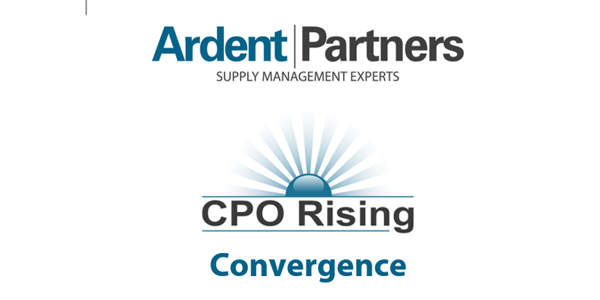Over the past few Thursdays, I have been highlighting the 15 annual CPO/State of Procurement reports that I have written. In March of 2014, we published CPO Rising 2014: Convergence, a report covered the state of procurement and focused in on the convergence fever that had been gripping business. Within the enterprise, business processes and functions were converging around value and shared interests just as some business partners are along supply chain lines. One example of this corporate convergence was the Chief Procurement Officer , a role that many executives then viewed as they may have viewed a smart phone or Swiss army knife: a multi-functional device (or leader) that can adeptly support many key activities. Business leader, sourcing expert, trusted advisor, relationship manager, supply manager, cash manager, risk manager, and many other roles are converging under the leadership of the CPO.
Here are a few excerpts:
In 2014, Chief Procurement Officers (CPOs) will seek to extract and deliver more value from their departments than ever before as they attempt to stretch the limits of their organizations while also maximizing the relationships they have developed with suppliers and internal stakeholders. Procurement’s ability to impact business processes, relationships, and results will surely continue in 2014, but the depth and breadth of that impact will depend on each organization’s ability to master its processes and technologies and upon the ability of its leader, the CPO, to maintain the department’s focus and ensure fast, but assured, decision-making and crisp and agile execution in what is certain to be a more challenging year.
Ardent Partners believes that the current convergence of business processes and functions occurring beneath the CPO will continue in the years ahead. Says the CPO of a multi-billion dollar CPG company, “In the past three years, procurement has taken on a more formal role supporting M&A activities as well as FCPA [Foreign Corrupt Practices Act] compliance. Procurement has taken a stronger leadership position in contingent workforce management and meetings management in close partnership with other parts of the business. We have taken full ownership of supply risk management, social and environmental responsibility, as well as travel and expense management. No roles have been taken away. The need for closer control over policies as well as for cost management drove most of these changes.”
As the Chief Procurement Officer role continues to mature, greater expectations are born. And, as a procurement organization matures, its focus and scope typically expand, as does its ability to impact decisions and operations. For example, by gaining better visibility into enterprise spend and developing a clear understanding of enterprise objectives, procurement is better able to influence stakeholders’ sourcing/buying decisions. And by gaining visibility into supplier performance and establishing trust and clear lines of communication, procurement is better able to influence strategic suppliers. But, beyond their influence on spend and suppliers, successful CPOs are expanding their influence into less traditional areas driven in part, by recognition of their superior performance and in part by the need to fill the void left by other, less successful groups.
If CPOs were executive “Supermen” and “Superwomen” in 2009, then today they are much more likely to be disguised as executive “Clark Kents,” blending in well with other enterprise executives. For most CPOs, the past two years have been nice, steady, and largely uneventful with many reaping the rewards and responsibilities that were earned by delivering in the aforementioned tough times. When CPOs were asked to identify the top two business pressures facing their organizations today as part of this research study, delivering savings is still the top pressure, however, the level of pressure or response (56%) is at decade-level low point. Beyond savings and in general, CPOs feel less pressure as they begin to execute their plans for 2014.
For some procurement groups, convergence has come in the form of new, complex categories to manage like travel, contingent workforce, BPO, and meetings while others have taken over wholesale business functions such as accounts payable and facilities management. Others see convergence in those areas often closely associated with sourcing and suppliers – supply risk, new product development, and cash management. Anecdotally, more procurement departments are also getting involved with the ‘front-end’ of the house, specifically sales and customer relationships as several survey respondents shared: “closer alignment with Sales on some products and services,” or “more involvement in supporting the sales process including trying to get large suppliers to also buy from us and providing training to sales teams in how to deal with procurement,” and becoming “a core factor to a lot of business processes such as committing to a big contract/sales order, lead-time improvement per customer request, and inventory reduction programs with key customers.” Whether by design or necessity, the responsibilities of the procurement department in 2014 continue to grow and sometimes shift, with it comes the opportunity to make a larger impact.
The speed of business translates directly to need for more sourcing and both the Best-in-Class and All Other groups have responded with increasing sourcing volumes over the last few years. As the VP, Purchasing (CPO) for a European-based Financial Institution said, “If you buy from the same people forever, the only thing that is going to change is that your price is going to go up.” If you fail to regularly test the market, there is a also a large risk of missing out on innovation.
RELATED RESEARCH
CPO Rising 2012: Keeping Score
CPO Rising 2011: Innovative Ideas for the Decade Ahead
The CPO’s Agenda 2009: Smart Strategies for Tough Times
The CPO’s Strategic Agenda 2006 – Managing People, Managing Spend

